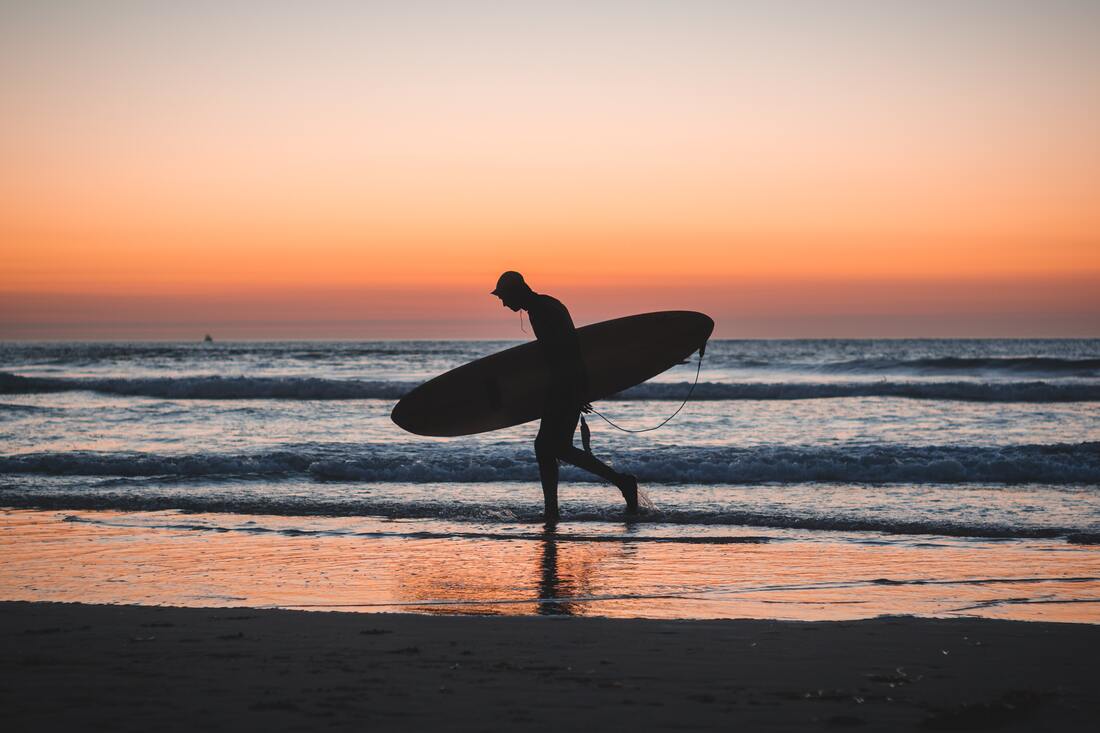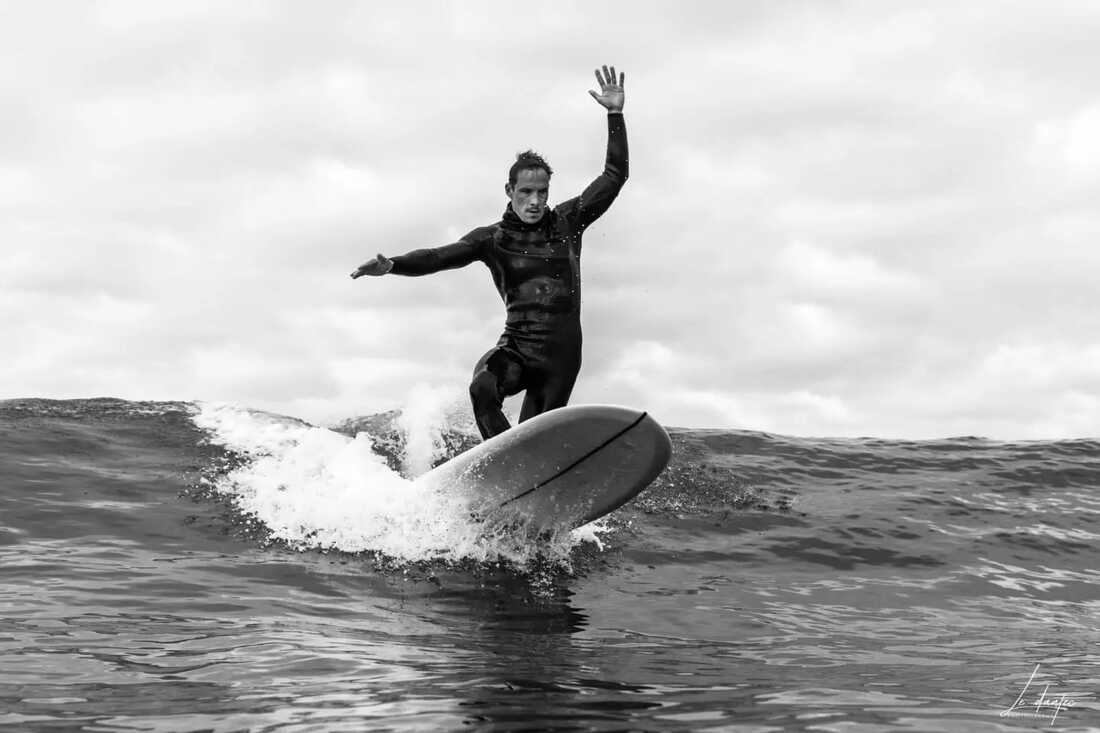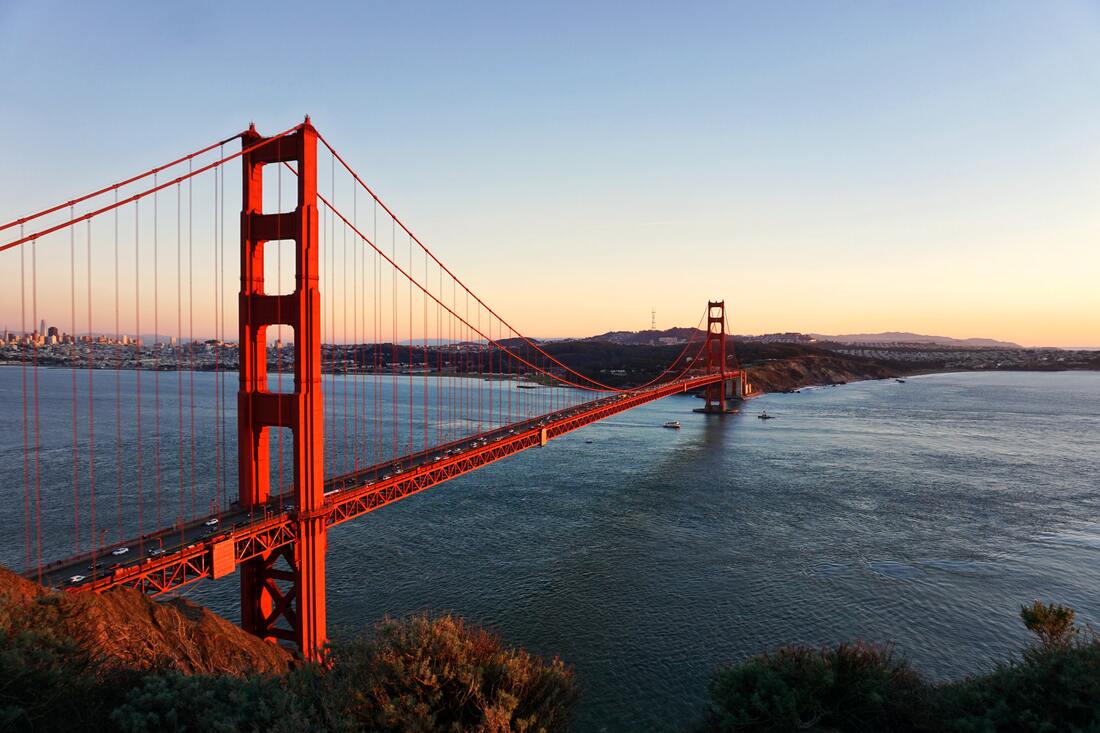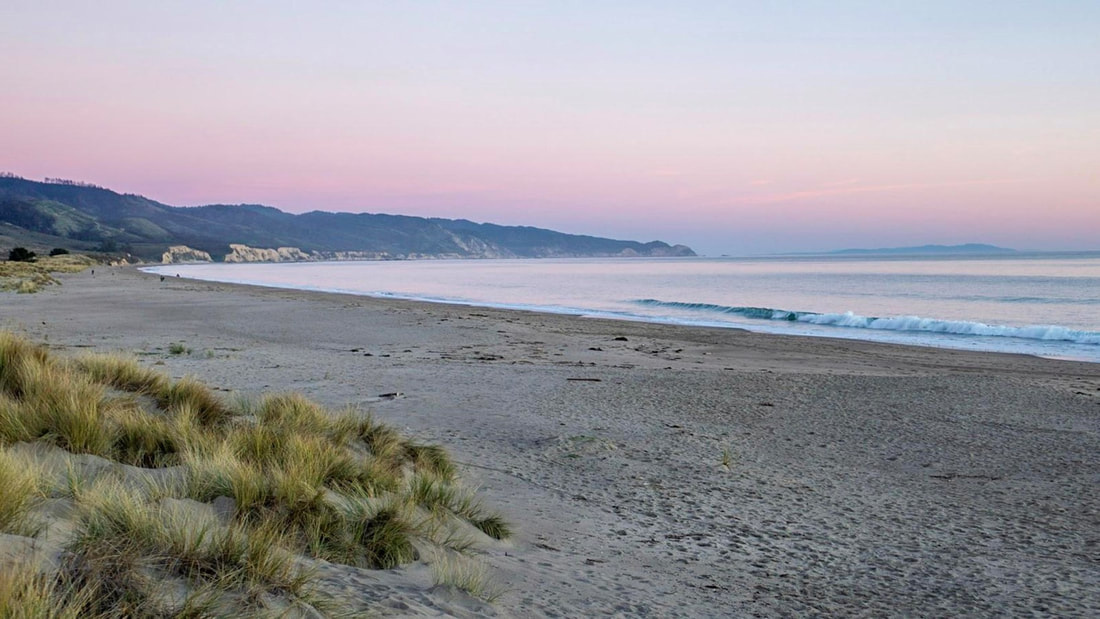Best Places to Surf in Brittany, FranceBrittany, is the peninsula that sticks out of France jutting out into the Atlantic Ocean. Its wild coast stretches for kilometers with seaside resorts such as Dinard or the fortified city of Saint-Malo But in the last few years beach goers are seeing a rise of surfers invading waters across the region. Brittany is now the second region of France in terms of number of surfers. The region has a long history of surfing and is home to some of the best surf spots in France. From beginner-friendly beach breaks to challenging reef breaks, there is something for surfers of all levels in Brittany. In this blog post, we will take a look at some of the best surf spots in Brittany and provide tips on where to stay, what to bring, and how to make the most of your surf trip to this beautiful region. From La Torche to Guidel, here is a top 5 of where you can surf gnarly breton waves. Top 5 surfing spots in Brittany, FranceSurfing in Guidel & Plomeur (Morbihan)Guidel in the Morbihan is called a "surf town" and has several surf spots to find a wave, from Le Loc'h, Maeva or Kaolins. The area has 17 km of coastline including 5 km of fine sandy beaches and coves. Loc'h beach, for example, is nearly 600 m. Between the currents and the mouth of the Laita, it is only possible to surf at low tide and during the first hours of the rising tide. Beginners can take a course at the ESB Fort Bloque. Looking for a eco-friendly surf shop check out Pioka. ​ Surfing in Quiberon & Plouharnel (Morbihan)
Also located in the Morbihan on the Quiberon peninsula is one of Brittany's most famous surf spots. From Plouharnel, labeled "Surf City", a magnificent beach stretches for several kilometers. The first spots are ideal for learning to surf, where the beach offers quieter waves; those located on the wild coast are where experienced surfers can be found.
It is possible to surf at low tide as at high tide. If you are a beginner and want to get started check out ESB Plouharnel. ​ ​ Surfing in The Bay of Trepasses (Finistere)
The Baie des Trepasses is popular site in Finistere. Surrounded by cliffs and the bay is exposed to swells from the west and northwest allowing to surf at all tides. You'll have a cozy feel as you are surfing between the high cliffs of Pointe du Raz and Pointe du Van. The surf area stretches over 600 meters of beach.
If you want to get some tourism in after surfing visit the end of the world at Pointe du Raz. ​ Surfing near Brest (Finistere)
Brest is one of the largest cities in Brittany but also has a surf spot a few minutes drive from the city center. Called au petit minou is it very popular with beach goers and surfers during the summer months.
To find out more about the city of Brest that is twinned with Denver visit HERE ​ Surfing at La Torche (Finistere)
Last but not least is La Torche which is considered the mecca of surfing in Brittany. The spot welcomes swells from northwest to southwest through the west that form waves on the beach. This spot sometimes offers powerful waves that can reach 3 meters, 3.5 meters.
Locals can also be found surfing other spots nearby like Tronoen or Porz Carn. La Torche is a magnificent and immense white sand beach, which also hosts major national and international events. ​ ​These are only 5 surf spots in Brittany but you can find many more across Brittany. Visit here for more spots. ​ What is the best time of year to surf in Brittany, France?
The best time of year to surf in Brittany, France depends on your level of experience and the type of waves you prefer. Here are a few factors to consider:
​
​Overall, the best time of year to surf in Brittany will depend on your personal preferences and the type of waves you are looking for. If you are an advanced surfer looking for big, challenging waves, the fall and winter months may be the best time to visit. If you are a beginner or prefer smaller, more manageable waves, the summer months may be a good time to visit. How to travel to surf spots in Brittany, France?
There are several ways to get to the surf spots in Brittany, France:
​
Overall, the best way to get to the surf spots in Brittany will depend on your location and personal preferences. Renting a car can be a good option if you want to have more flexibility and freedom to explore the region, while public transportation can be a more budget-friendly option. ​ Surf Camps and Schools in Brittany, France: Improve Your Skills and Have Fun
Surf camps and schools in Brittany offer a great opportunity for surfers of all levels to improve their skills and have fun in a supportive and welcoming environment. These camps and schools are typically run by experienced instructors who are knowledgeable about the local surf conditions and can provide personalized coaching and guidance.
Many surf camps and schools in Brittany also offer accommodation and other amenities, such as yoga classes, massage therapy, and cultural activities, making them a convenient and enjoyable option for surfers looking to fully immerse themselves in the surfing experience. Whether you are a beginner looking to learn the basics of surfing or an experienced surfer looking to fine-tune your skills, surf camps and schools in Brittany are a great way to make the most of your surf trip. Here are a few surf camps and schools in Brittany that you might consider for your surf trip: ​
These are just a few examples of the many surf camps and schools in Brittany. There are many other options to choose from, so be sure to do your research and find the one that best meets your needs and preferences. Explore the Local Culture and Cuisine During Your Surf Trip
One of the great things about surfing in Brittany is that it provides an opportunity to not only ride the waves, but also to immerse yourself in the local culture and cuisine. Brittany is a region with a rich history and culture, and there are many interesting places to visit and things to see and do beyond the surf spots. From ancient castles and churches to charming coastal towns and villages, Brittany has something for everyone.
​In addition to exploring the local culture, be sure to try some of the delicious local cuisine while you are in the region. Brittany is known for its seafood, particularly oysters and mussels, as well as its crepes and cider. Don't miss the opportunity to experience a traditional Fest Noz, a Breton folk dance festival that features live music and dancing. So don't forget to indulge in some of these local specialties and cultural experiences during your surf trip to Brittany. Surf Board Makers in Brittany
Brittany is a region of France with a rich surf culture and a long history of surfboard making. The region is home to many talented surfboard makers who are dedicated to crafting high-quality surfboards that meet the needs and preferences of surfers of all levels and styles. From small, independent companies to larger, more established manufacturers, Brittany has something for everyone.
​In this section, we will introduce you to some of the top surfboard makers in Brittany and provide an overview of their products and services. Whether you are in the market for a new surfboard or simply interested in learning about the art of surfboard making, this section is for you. Some examples include:
These are just a few examples of the many surfboard makers in Brittany. There are many other options to choose from, so be sure to do your research and find the one that best meets your needs and preferences.
1 Comment
Joseph-Yves Limantour, San Francisco's richest man?In the mid-19th century, a Breton captain, Joseph-Yves Limantour, was the owner of more than half of San Francisco and the islands of the Bay. He went on to make his fortune in Mexico, where his son became a minister, after his claim to be one of the world's richest men was overturned by an American court. We know very few details about the youth of Joseph-Yves Limantour, born in 1812, in Ploemeur, Brittany, France. He was the eldest of a family of six children and his father was a guard in the port of Lorient. At 19, like many inhabitants of the Lorient region he joined the merchant navy. For 5 years, he sailed in the Atlantic transporting goods and people between Vera Cruz and France. In 1836, after crossing Cape Horn, he continued his shipping activities based in Lima, Peru. As a trader and ship captain, he explored new economic opportunities along the Pacific coasts, from Valparaiso (Chile) to California. On October 26, 1841, his schooner, the Ayacucho, ran aground at the entrance to San Francisco Bay. A dense fog had caused him to miss the famous Golden Gate, at the entrance of the Bay. With his men, he traveled to Sausalito where he chartered a boat to collect his shipwrecked merchandise: silks, spirits, equipment and food that had been destined for settlers. The salvage was a considerable success and he was eventually able to make significant profits from his sales leading him to stay in the Yerba Buena pueblo for a year. At the time California was part of Mexico and in 1842, Limantour loaned money to the Mexican governor, Manuel Micheltorena, who offered land in the area in lieu of payment. By 1830, American settlers began to arrive in California leading to greater tensions between the United States and Mexico. During the American-Mexican War (1846-1848), Limantour picked sides and offered his services to the Mexican army by delivering arms, ammunition and food. Short of cash, the Mexican governor of California continued to pay debts to Limantour by granting him land titles. In 1847, the American warship Warren boarded his ship, but he dumped his cargo of weapons in the ocean before they were discovered. California becomes the 31st US state Between 1840 and 1850, Joseph-Yves Limantour owned more than one million hectares in the San Francisco area, which made him one of the richest men in the world. But picking the right side was important, and Limantour hadn't. On July 4, 1848, the Treaty of Guadalupe Hidalgo was proclaimed between the USA and Mexico. The treaty called for the United States to pay $15 million dollars to Mexico and to pay off the claims of American citizens against Mexico up to $5 million dollars. It gave the United States the Rio Grande as a boundary for Texas, and gave the U.S. ownership of California and a large area comprising roughly half of New Mexico, most of Arizona, Nevada, Utah and Colorado. Mexicans in those annexed areas had the choice of relocating to within Mexico's new boundaries or receiving American citizenship with full civil rights (over 90% chose American citizenship). The treaty was also suppose to ensure safety of existing property rights of Mexican citizens living in the transferred territories. Despite assurances to the contrary, the property rights of Mexican citizens were often not honored by the U.S. in accordance with modifications to and interpretations of the Treaty. In 1851, California became the 31st state of the United States of America. Limantour, one of the richest man in the world?The California Gold Rush began on January 24, 1848, and lasted until 1855. The discovery of gold drew nearly 300,000 people from all over the United States and the world to California. The sudden influx of gold into the money supply re-energized the American economy, and California's rapid ascension to statehood was aided by the sudden rise in population. With the Gold Rush the value of land in California skyrocketed hindering Limantour's land claims that needed to be confirmed in US courts. On February 5, 1853, Joseph-Yves Limantour presented 57 title deeds (75,000 hectares) to the Land Commission in charge of verifying and confirming the concession titles issued during the Mexican era: 2/3 of the city of San Francisco, the islands of Alcatraz, Yerba Buena and Farrallones, the peninsula of Tiburon, Cape Mendocino, the Laguna de Tache (in Fresno), the county of Solano (between Vallejo and Sacramento) and the Cienega Valley. To everyone's surprise, in January 1856, the Limantour's title claims relating to the concessions of San Francisco, the islands of Alcatraz and the Farrallones were validated. Panic quickly ensued amongst the population of San Francisco who, since the Gold Rush of 1848, had unwittingly settled on land belonging to the famous Breton merchant. Hundreds of them decided to buy back their land, helping Limantour accumulate a sizable fortune. Limantour's victory would only be short lived. The American government had established federal buildings (customs post, military fort, federal bank, etc.) in San Francisco and had no desire to pay Limantour for the land under those new buildings. They requested an appeal to the Land Commission's decision. On November 19, 1858, the Commission reversed its decision of 1856 and declared the Limantour concessions unfounded and that his titles had been fabricated. If not for his court defeats, Joseph-Yves Limantour would have been the second or third richest man in the world during his lifetime, some American economists have estimated. He would lick his wounds comfortably in exile in Mexico. He business activities and contacts like the general Porfiro Diaz (President & Dictator of Mexico) helped him amass a sizable fortune. In 1884, he had returned to Brittany, France with his wife, his son José-Yves, his daughter-in-law and her parents. They spent several weeks in the Lorient area, where he reconnected with relatives and the places of his childhood. He never returned to California but you can still visit where it all started when he shipwrecked. Limantour Beach is a long narrow stretch of sand, backed by low cliffs located between Drakes Bay and an estuary. Learn more about Breton-American history. |
Categories
All
Blog Archives
June 2024
Breizh Amerikais an organization established to create, facilitate, promote, and sponsor wide-ranging innovative and collaborative cultural and economic projects that strengthen and foster relations and cooperation between the United States of America and the region of Brittany, France. |
Copyright 2014 - All rights reserved - Breizh Amerika - Privacy Policy




 RSS Feed
RSS Feed

